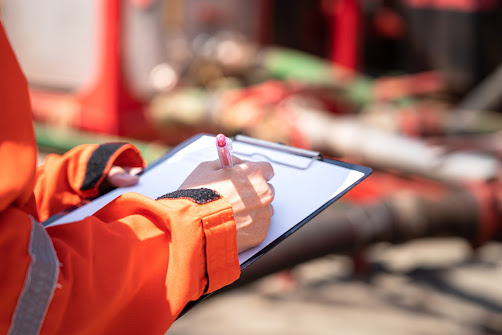 |
| Behind-the-scenes view of a remote new hire training... lots of screens! |
Depending on your source, around one third to 40% of all injuries involve employees that are new to their job, with less than one year of experience. That's a huge portion of injuries. It also presents a great opportunity to reduce the likelihood of injuries within your company by focusing on your new hire training and onboarding processes.
Most companies have some type of onboarding process, and for our member companies, TT&S is a part of that, providing new hire training relevant to each job title. Each new hire class also includes basics on first aid and CPR, so employees exit the class with the skills to assist someone in an emergency.
This instruction is important, with much of it explicitly required by regulation. However, what many may not realize is that new hire training doesn't stop with only the formal classroom safety training.
The classroom training can cover a lot of material and deliver important information to employees, but those employees need to see that training reinforced in their actual jobs, by supervisors, coworkers, and company leadership. If they don't, the learning that took place in the classroom may not stick.
They also need to see what those safety principles look like in their specific job settings. At what points of their job are they expected to wear helmets, or a respirator, or gloves? They'll take their cue from their coworkers and supervisors first.
Whatever your process for new hire training, make sure you know what training is legally required. For our member companies, TT&S takes that on, keeping informed of regulatory changes and ensuring all training is compliant. And once new hire training is finished, make sure that coworkers and supervisors are ready to assist the new employee and ensure they keep safe.
To help with this, TT&S also offers a course for front-line supervisors on ways they can coach employees on safety skills, as well as safety responsibilities for supervisors. If you would like to sign up for this course or receive a recording, please feel free to reach out.


